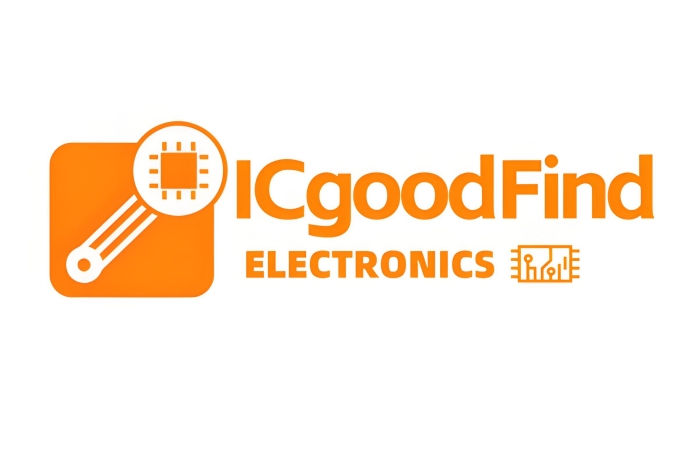**The AD7795BRUZ-REEL: A Comprehensive Guide to its Features, Applications, and Design Considerations**
In the realm of precision measurement, the ability to accurately digitize low-frequency, low-amplitude sensor signals is paramount. The **AD7795BRUZ-REEL** from Analog Devices stands as a pinnacle of integration and performance in the world of sigma-delta analog-to-digital converters (ADCs). This device is meticulously engineered for high-resolution, low-power applications, making it an ideal solution for a vast array of industrial, instrumentation, and scientific systems.
**Key Features and Architectural Advantages**
The AD7795BRUZ-REEL is far more than a simple ADC; it is a complete analog front-end (AFE) on a single chip. Its most significant features are its **exceptional 24-bit resolution with no missing codes** and an ultra-low RMS noise of 40 nV. This allows it to resolve minute voltage changes, which is critical when interfacing directly with delicate bridge sensors like strain gauges and load cells.
At the heart of its design is a **low-noise, 16-channel programmable gain amplifier (PGA)**. With gains from 1 to 128, the ADC can amplify very small signals to utilize its full dynamic range, eliminating the need for external amplification in most cases. Furthermore, it incorporates an **on-chip precision low-noise excitation current source** that can be used to excite bridge sensors, simplifying system design and improving overall accuracy by ratiometric measurement.
Power consumption is a critical factor in portable or remote equipment. The AD7795 excels here as well, consuming a mere **65 µA in normal mode and dropping to less than 1 µA in power-down mode**. This makes it perfectly suited for battery-powered applications. The device communicates via a simple serial interface (SPI-compatible), facilitating easy connection to microcontrollers and digital processors.
**Primary Applications**
The combination of high resolution, integrated features, and low power consumption opens the door to numerous applications. Key sectors include:
* **Industrial Process Control:** Used in **weigh scales, pressure transducers, and temperature monitoring** systems where precision and reliability are non-negotiable.
* **Portable Instrumentation:** Its low-power operation is ideal for **blood glucose meters, portable gas detectors, and field data loggers**.
* **Medical Equipment:** Found in critical patient monitoring devices that require high-precision acquisition of biomedical signals.
* **Precision Measurement:** Any system requiring the digital conversion of a DC or low-frequency analog signal with the utmost accuracy, such as material testing machines or chromatographs.
**Critical Design Considerations**

Successfully integrating the AD7795BRUZ-REEL into a design requires careful attention to several factors to achieve its specified performance.
1. **Power Supply and Reference Voltage Stability:** The accuracy of any ADC is directly tied to the quality of its reference voltage. A **low-noise, highly stable external reference voltage** is essential for achieving the AD7795's full 24-bit performance. Similarly, clean and well-decoupled power supplies (AVDD and DVDD) are mandatory.
2. **PCB Layout and Grounding:** High-resolution data conversion is susceptible to noise. A **proper PCB layout with separate analog and digital ground planes** is crucial. These planes should be connected at a single point, typically under the ADC. Bypass capacitors must be placed as close as possible to the power supply pins.
3. **Clock Source and Filtering:** The internal clock is adequate for many applications. However, for applications requiring superior line noise rejection (50 Hz/60 Hz), an **external clock source can be used to synchronize the conversion cycle to the mains frequency**, leveraging the AD7795's built-in simultaneous 50 Hz/60 Hz rejection filters.
4. **Sensor Excitation and Calibration:** While the on-chip current sources are convenient, their absolute accuracy may not be sufficient for the most demanding applications. Implementing **system-level calibration routines** is necessary to null out offset and gain errors from the entire signal chain, including the sensor and the ADC.
5. **Digital Interface Management:** To minimize digital noise coupling into the sensitive analog sections, it is good practice to only activate the serial clock (SCLK) and chip select (CS) when necessary. Keeping these signals static during the conversion period is highly recommended.
**ICGOODFIND**
The **AD7795BRUZ-REEL** is a highly integrated, precision 24-bit sigma-delta ADC that provides a complete, low-power solution for measuring low-frequency analog signals. Its combination of high resolution, on-chip PGA, excitation sources, and flexible power modes makes it an outstanding choice for designers tackling challenges in industrial control, portable instrumentation, and any application demanding uncompromising accuracy from bridge sensors and other low-level signal sources.
**Keywords:**
1. **24-bit Sigma-Delta ADC**
2. **Low-Noise Programmable Gain Amplifier (PGA)**
3. **Bridge Sensor Interface**
4. **Low-Power Precision Measurement**
5. **Analog Front-End (AFE)**
